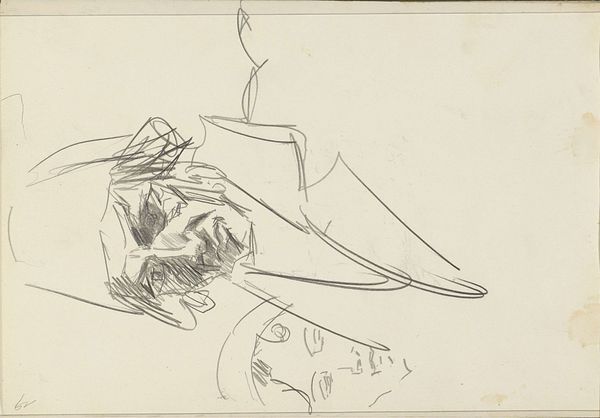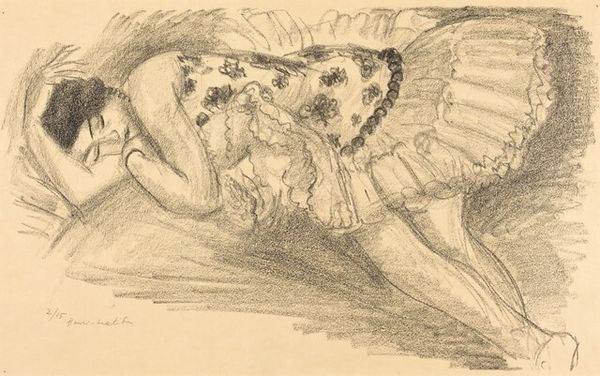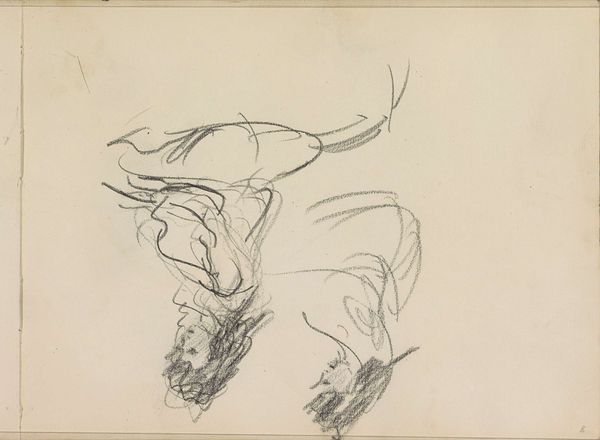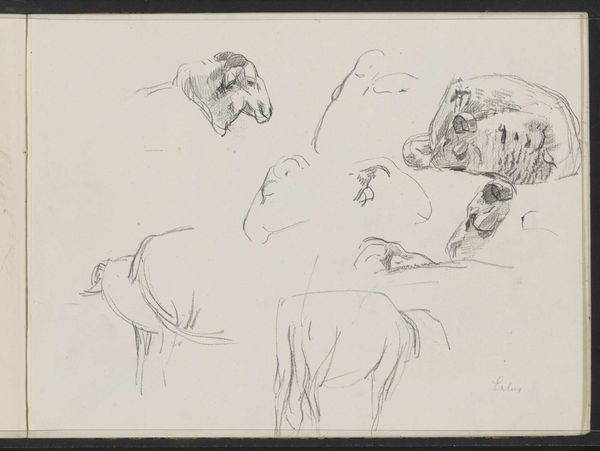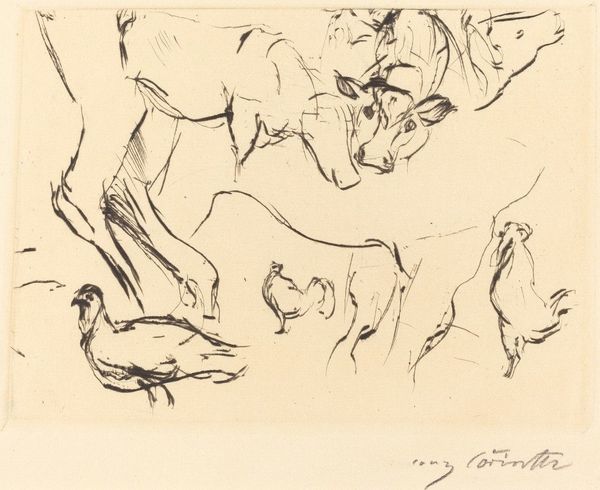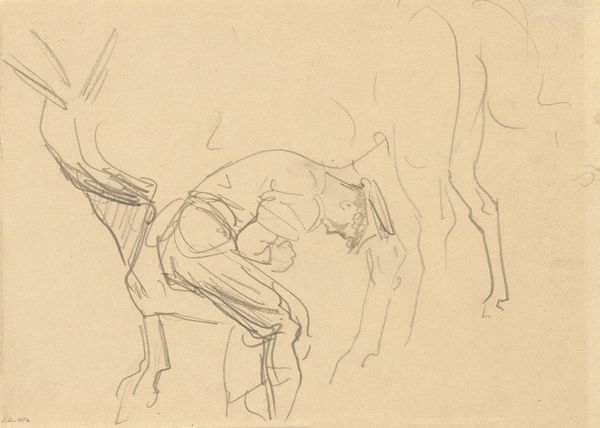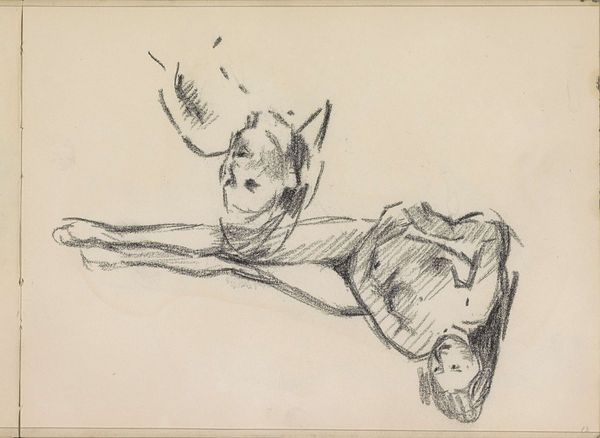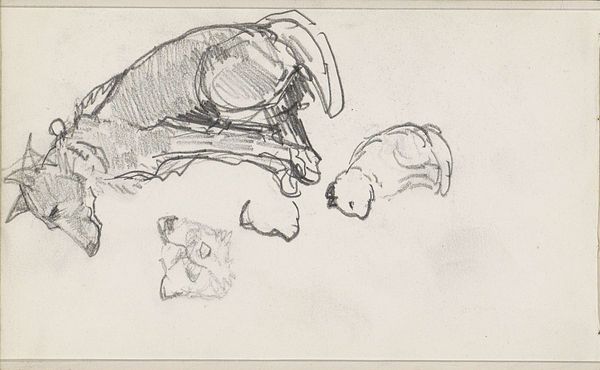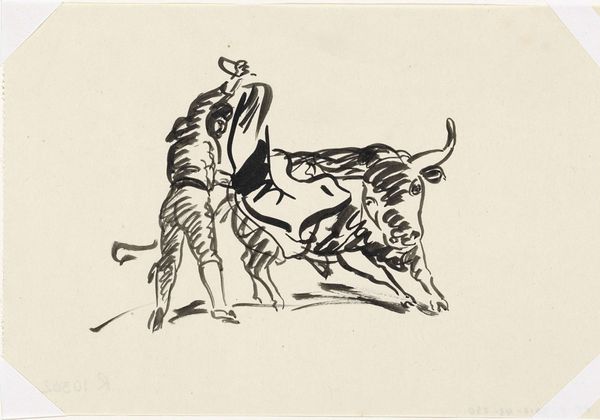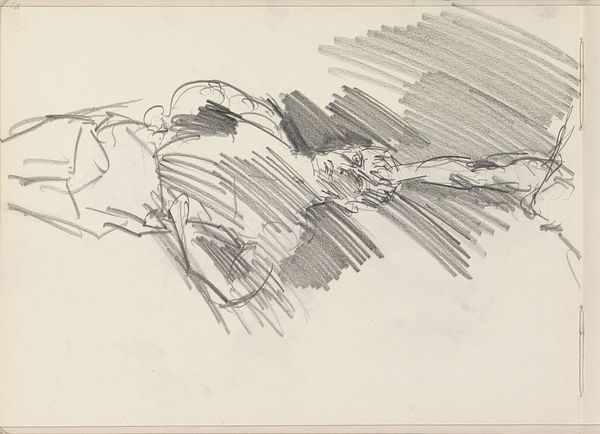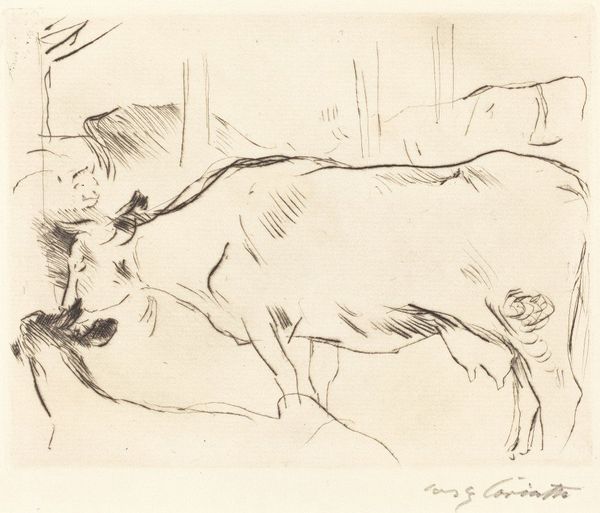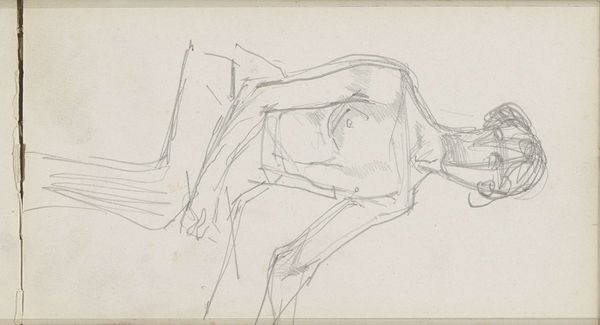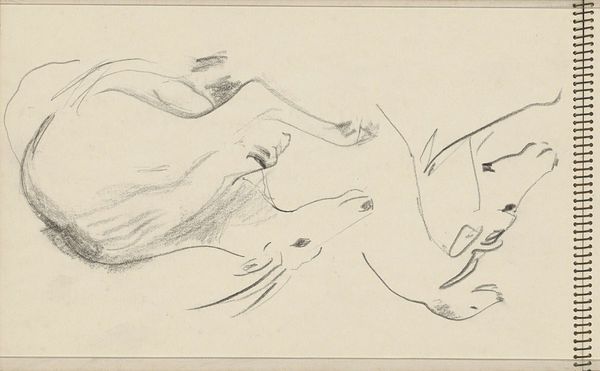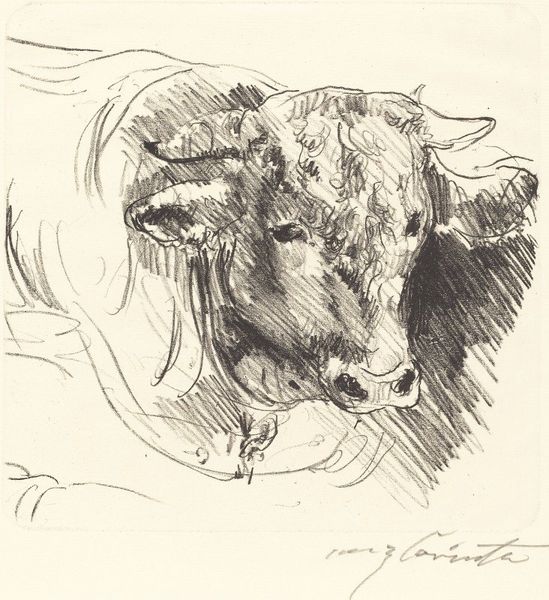
drawing
#
drawing
#
imaginative character sketch
#
pen sketch
#
personal sketchbook
#
idea generation sketch
#
sketchwork
#
character sketch
#
ink drawing experimentation
#
pen-ink sketch
#
fantasy sketch
#
initial sketch
Copyright: Public Domain: Artvee
Editor: Lovis Corinth’s 1912 drawing, "Rams," is a whirlwind of lines. The rams' heads emerge from the sketch like powerful thoughts. What is it about this seemingly simple sketch that still resonates today? Curator: Well, looking at Corinth's "Rams" from a historical perspective, it's fascinating how a quick drawing can reveal anxieties and obsessions within early 20th-century German society. Consider Corinth's other works and the general artistic climate – expressionism was in full swing, critiquing the established order. Do you see any hint of that rebelliousness here? Editor: Maybe in the raw, unfinished nature of it? It feels like a challenge to the academic art of the time. Curator: Exactly. The looseness is key. Instead of idealizing the animals, Corinth gives us raw energy. It could be argued that these rams are metaphors for virility and aggression in a society rapidly hurtling towards war. Furthermore, sketches like this also democratized artmaking. They made artistic expression seem more accessible. Did this change the function of what was displayed in museums? Editor: Definitely, showing preparatory sketches gave viewers insight into the creative process, and legitimized "works-in-progress." Curator: It humanized the artist. Museums weren't just about finished products; they became sites for understanding the artistic journey. Editor: So, "Rams," more than just a drawing, reflects a shift in how art was perceived and presented within society. It became not just about the image, but how artists grapple with larger social and political forces, right? Curator: Precisely. The drawing challenges institutionalized forms of art expression, hinting at the larger context of social changes happening around that period. Editor: That’s a really insightful perspective; I hadn't thought about its role in challenging art norms in this way before. Thank you.
Comments
No comments
Be the first to comment and join the conversation on the ultimate creative platform.
